| |
|
|
Botanical Name |
: |
Valeriana officinalis L. |
English
Name |
: |
Valerian. All-Heal. Amantilla. Setwall. Setewale and Capon's Tail |
Synonym(s) |
: |
Valeriana sambucifolia, Mikan, Valeriana angustifolia, Tausch. |
Family |
: |
Valerianaceae |
| |
General Info
| Description |
 |
|
The roots tend to merge into a short, conical root-stock or erect rhizome, the development of which often proceeds for several years before a flowering stem is sent up, but slender horizontal branches which terminate in buds are given off earlier, and from these buds proceed aerial shoots or stolons, which produce fresh plants where they take root. Only one stem arises from the root, which attains a height of 3 or 4 feet. It is round, but grooved and hollow, more or less hairy, especially near the base. It terminates in two or more pairs of flowering stems, each pair being placed at right angles to those above and below it. The lower flowering stems lengthen so as to place their flowers nearly or often quite on a level with the flowers borne by the upper branches, forming a broad and flattened cluster at the summit, called a cyme. The leaves are arranged in pairs and are united at their bases. Each leaf is made up of a series of lance-shaped segments, more or less opposite to one another on each side of the leaf (pinnate). The leaflets vary very much in number, from six to ten pairs as a rule, and vary also in breadth, being broad when few in number and narrower when more numerous; they are usually 2 to 3 inches long. The margins are indented by a few coarsely-cut teeth. The upper surface is strongly veined, the under surface is paler and frequently more or less covered with short, soft hairs. The leaves on the stem are attached by short, broad sheaths, the radical leaves are larger and long-stemmed and the margins more toothed. The flowers are small, tinged with pink and flesh colour. The corolla is tubular, and from the midst of its lobes rise the stamens, only three in number, though there are five lobes to the corolla. The limb of the calyx is remarkable for being at first inrolled and afterwards expanding in the form of a feathery pappus, which aids the dissemination of the fruit. The fruit is a capsule containing one oblong compressed seed. Apart from the flowers, the whole plant has a foetid smell, much accentuated when bruised. |
| Herb Effects |
 |
|
The root is antispasmodic, carminative, diuretic, hypnotic, powerfully nervine, stimulant, sedative, antistress, hypnotic, reduces pain sensation and promotes sleep |
Chemistry
| Active Ingredients |
 |
|
Acetic acid, ascorbic acid, azulene, beta-bisabolene, beta-elemene, beta-ionene, beta-phellandrene, beta-pinene, beta-sitosterol, borneol, bornyl-acetate, camphene, caryophyllene, chlorogenic acid, choline, delta-cadinene, formic acid, gamma-terpinene, limonene, niacin, riboflavin, terpinolene, thiamin, valeric acid, valtrate (root); beta-carotene, caffeic acid, gamma-linolenic acid, kaempferol, linoleic acid, myrcene, oleic acid, p-coumaric acid, palmitic acid, quercetin (plant). |
| Chemistry
of Active Ingredients |
 |
|
|
 |
Name |
CAS# |
IUPAC Name |
Formula |
Structure |
 |
|
| Ascorbic acid |
Not Available |
2-(1,2-dihydroxyethy
l)-4,5-dihydroxy-fur
an-3-one |
C6H8O6 |

|
| beta-Carotene |
Not Available |
3,7,12,16-tetramethy
l-1,18-bis(2,6,6-tri
methyl-1-cyclohexeny
l)-octadec
a-1,3,5,
7,9,11,13,15,17-nona
ene |
C40H56 |

|
| Beta-sitosterol |
5779-62-4 |
17-(5-ethyl-6-methyl
-heptan-2-yl)-10,13-
dimethyl-2,3,4,7,8,9
,11,12,14,
15,16,17
-dodecahydro-1H-cycl
openta[a]phenanthren
-3-ol |
C29H50O |
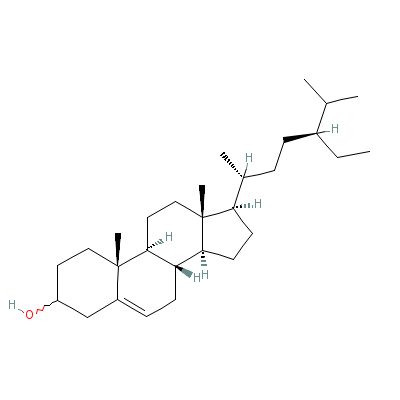
|
| Borneol |
10385-78-1 |
1,7,7-trimethylnorbo
rnan-2-ol |
C10H18O |
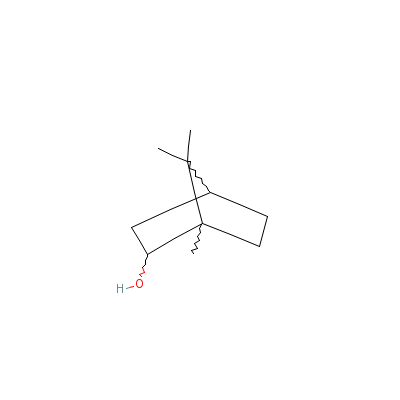
|
| Caffeic acid |
Not Available |
3-(3,4-dihydroxyphen
yl)prop-2-enoic acid |
C9H8O4 |
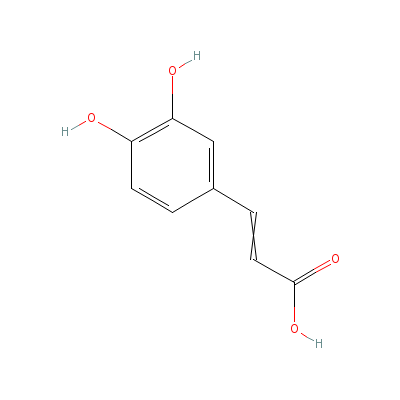
|
| Chlorogenic acid |
327-97-9 |
3-[3-(3,4-dihydroxyp
henyl)prop-2-enoylox
y]-1,4,5-trihydroxy-
cyclohexan
e-1-carb
oxylic acid |
C16H18O9 |
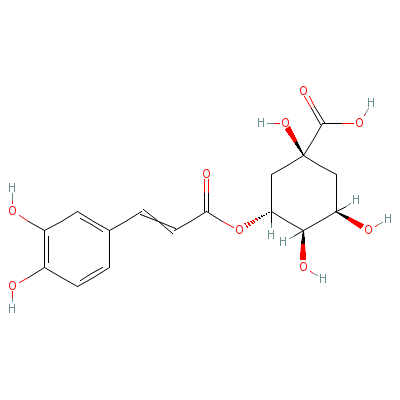
|
| Choline |
67-48-1 |
2-hydroxyethyl-trime
thyl-ammonium |
C5H14NO+ |
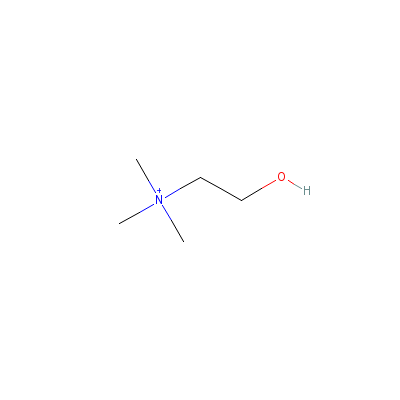
|
| Kaempferol |
80714-53-0 |
3-[3-[4,5-dihydroxy-
6-(hydroxymethyl)-3-
[3,4,5-trihydroxy-6-
(hydroxyme
thyl)oxa
n-2-yl]oxy-oxan-2-yl
]oxy-4,5-dihydroxy-6
-(hydroxymethyl)oxan
-2
-yl]oxy-4,5-dihy
droxy-2-(4-hydroxyph
enyl)-chromen-7-one |
C33H40O21 |
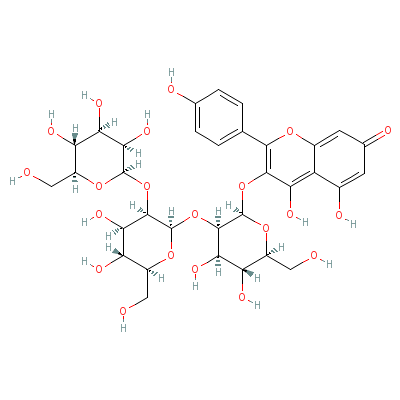
|
| Limonene |
9003-73-0 |
1-methyl-4-prop-1-en
-2-yl-cyclohexene |
C10H16 |
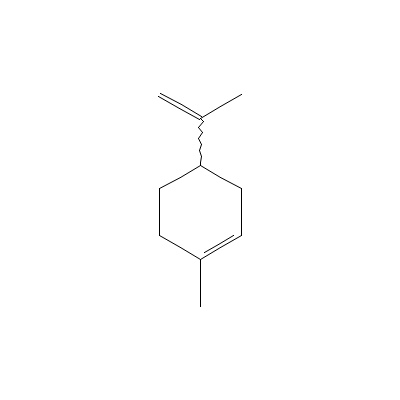
|
| Quercetin |
Not Available |
2-(3,4-dihydroxyphen
yl)-3,4,5-trihydroxy
-chromen-7-one |
C15H10O7 |
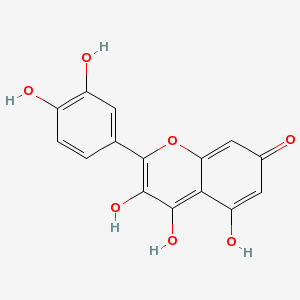
|
| Valerianine |
30634-66-3 |
5-(methoxymethyl)-9-
methyl-3-azabicyclo[
4.3.0]nona-2,4,10-tr
iene |
C11H15NO |

|
| Acetic acid |
77671-22-8 |
acetic acid |
C2H4O2 |
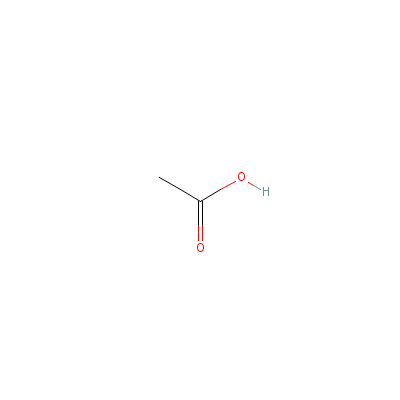
|
| Azulene |
Not Available |
3,8-dimethyl-5-propa
n-2-yl-azulene-1-sul
fonic acid |
C15H18O3S |
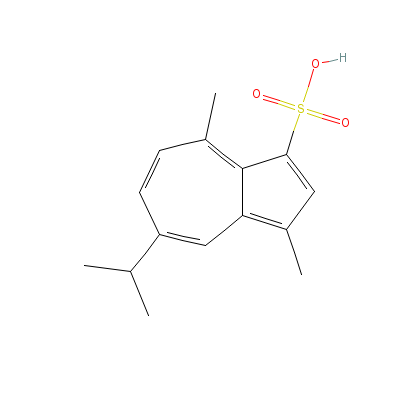
|
| beta-Bisabolene |
495-61-4 |
6-methyl-2-(4-methyl
-1-cyclohex-3-enyl)-
hepta-1,5-diene |
C15H24 |

|
| Beta-elemene |
33880-83-0 |
1-ethenyl-1-methyl-2
,4-diprop-1-en-2-yl-
cyclohexane |
C15H24 |
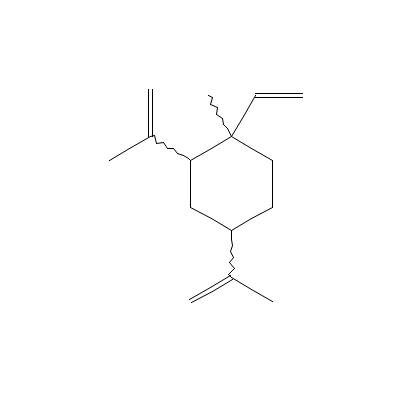
|
| Beta-ionone |
14901-07-6 |
4-(2,6,6-trimethyl-1
-cyclohexenyl)but-3-
en-2-one |
C13H20O |
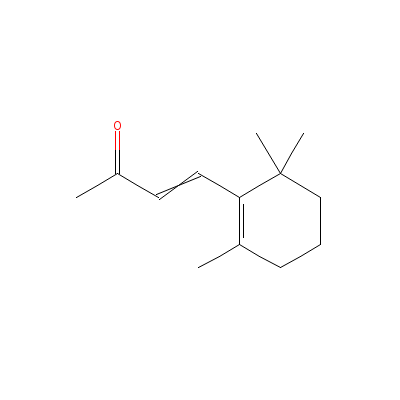
|
| beta-Phellandrene |
555-10-2 |
3-methylidene-6-prop
an-2-yl-cyclohexene |
C10H16 |

|
| Beta-pinene |
23089-32-9 |
6,6-dimethyl-2-methy
lidene-norpinane |
C10H16 |
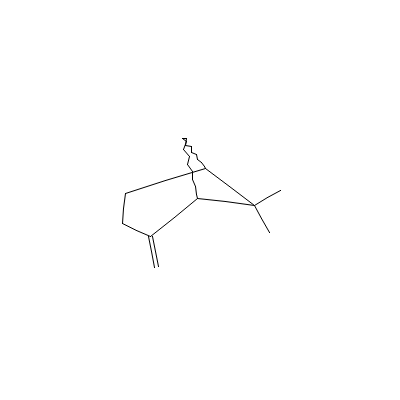
|
| Bornyl acetate |
20347-65-3 |
(1,7,7-trimethylnorb
ornan-2-yl) acetate |
C12H20O2 |
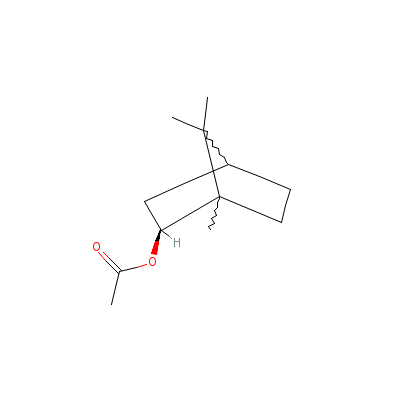
|
| Camphene |
5794-04-7 |
2,2-dimethyl-3-methy
lidene-norbornane |
C10H16 |
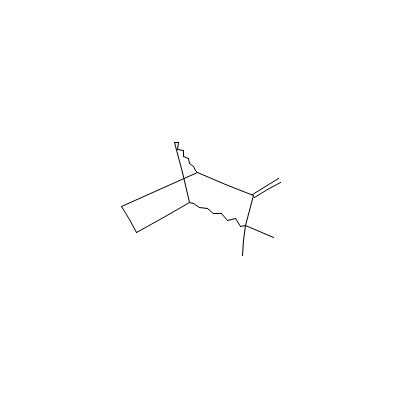
|
| Caryophyllene |
87-44-5 |
4,11,11-trimethyl-8-
methylidene-bicyclo[
7.2.0]undec-4-ene |
C15H24 |

|
| delta-Cadinene |
Not Available |
1,6-dimethyl-4-propa
n-2-yl-2,3,4,4a,7,8-
hexahydronaphthalene |
C15H24 |
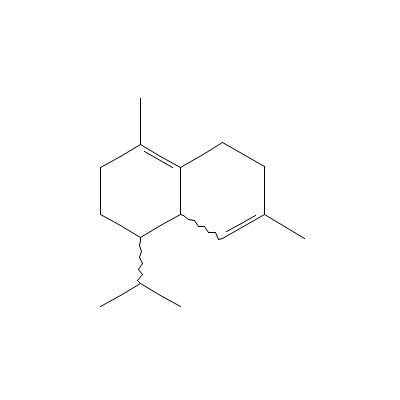
|
| Formic acid |
992-98-3 |
formic acid |
CH2O2 |

|
| gamma-Terpinene |
99-85-4 |
1-methyl-4-propan-2-
yl-cyclohexa-1,4-die
ne |
C10H16 |
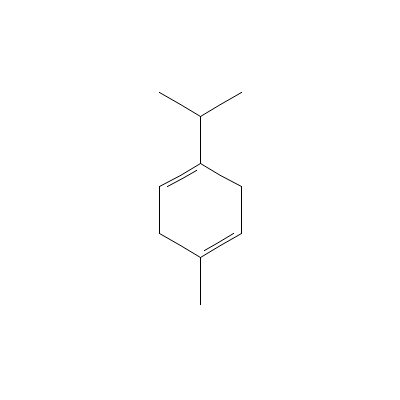
|
| Niacin |
99148-57-9 |
Pyridine-3-carboxyli
c acid |
C6H5NO2 |
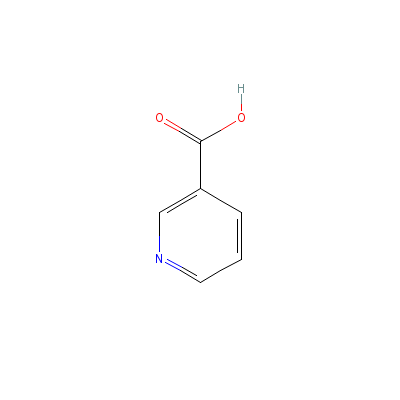
|
| Riboflavin |
Not Available |
Not Available |
C17H21N4O9P |
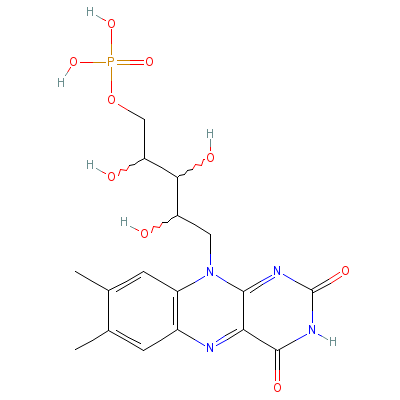
|
| Terpinolene |
586-62-9 |
1-methyl-4-propan-2-
ylidene-cyclohexene |
C10H16 |

|
| Thiamin |
59-43-8 |
2-[3-[(4-amino-2-met
hyl-pyrimidin-5-yl)m
ethyl]-4-methyl-1-th
ia-3-azoni
acyclope
nta-2,4-dien-5-yl]et
hanol |
C12H17N4OS+ |

|
| Valeric acid |
70268-41-6 |
pentanoic acid |
C5H10O2 |

|
| Valtrate |
18296-44-1 |
Not Available |
C22H30O8 |
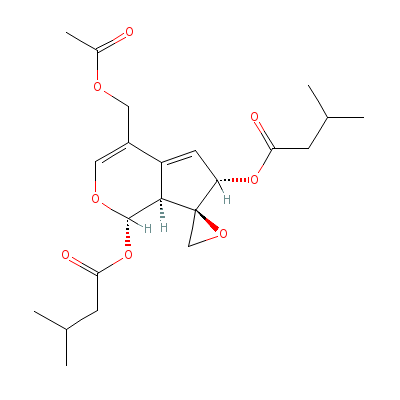
|
| gamma-Linolenic acid |
1686-12-0 |
(6E,9E,12E)-octadeca
-6,9,12-trienoic
acid |
C18H30O2 |

|
| Linoleic acid |
8024-22-4 |
Octadeca-9,12-dienoi
c acid |
C18H32O2 |
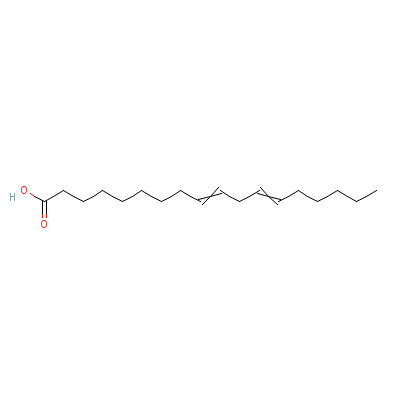
|
| Myrcene |
2153-31-3 |
7-methyl-3-methylide
ne-octa-1,6-diene |
C10H16 |
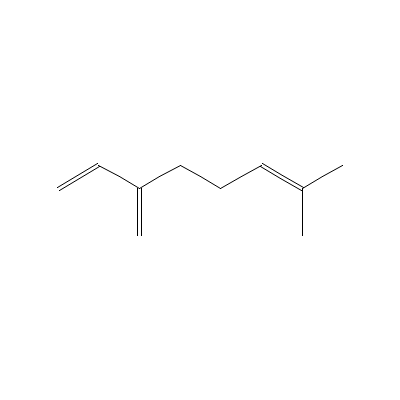
|
| Oleic acid |
8046-01-3 |
octadec-9-enoic acid |
C18H34O2 |
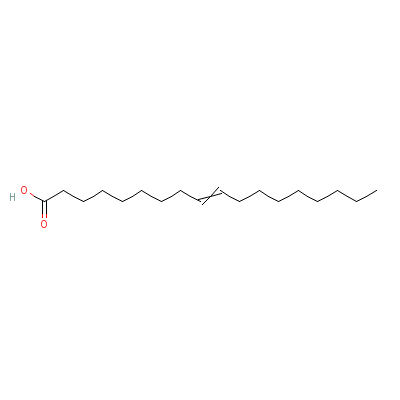
|
| P-coumaric acid |
501-98-4 |
3-(4-hydroxyphenyl)p
rop-2-enoic acid |
C9H8O3 |
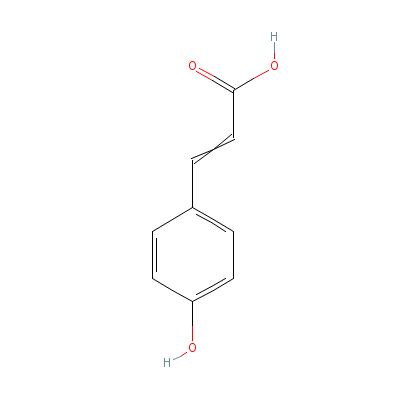
|
| Palmitic acid |
66321-94-6 |
Hexadecanoic acid |
C16H32O2 |
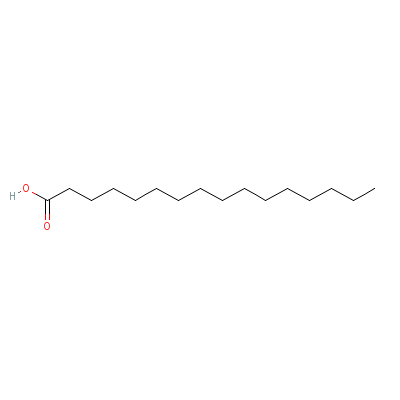
|
|
Pharmacology
| Medicinal Use |
 |
|
Good for emotional problems, such as anxiety and in headaches, insomnia, palpitations etc. Valerian has a remarkable influence on the cerebro-spinal system, and is used as a sedative to the higher nerve centres in conditions ofnervous unrest, St. Vitus's dance, hypochrondriasis, neuralgic pains and the like. The drug allays pain and promotes sleep. It is used for nervous overstrain, as it possesses none of the after-effects produced by narcotics. Oil of Valerian is employed as a popular remedy for cholera, in the form of cholera drops. The juice of the fresh root, under the name of Energetene of Valerian, has of late been recommended as more certain in its effects, and of value as a narcotic in insomnia, and as an anti-convulsant in epilepsy. Having also some slight influence upon the circulation, slowing the heart and increasing its force, it has been used in the treatment of cardiac palpitations. It is also used internally in the treatment of painful menstruation, cramps, hypertension, irritable bowel syndrome etc. Externally, it is used to treat eczema, ulcers and minor injuries. |
| Contraindication |
 |
|
Do not use during pregnancy or lactation period. |
| Reference |
 |
|
 Grieve. M. A Modern Herbal. 1931 (www.botanical.com). Grieve. M. A Modern Herbal. 1931 (www.botanical.com).
Johnson T. CRC Ethnobotany Desk Reference (www.herbweb.com/herbage).
Phytochemical Database. USDA - ARS - NGRL. Beltsville Agricultural Research Center. Beltsville. Maryland. |
|
|